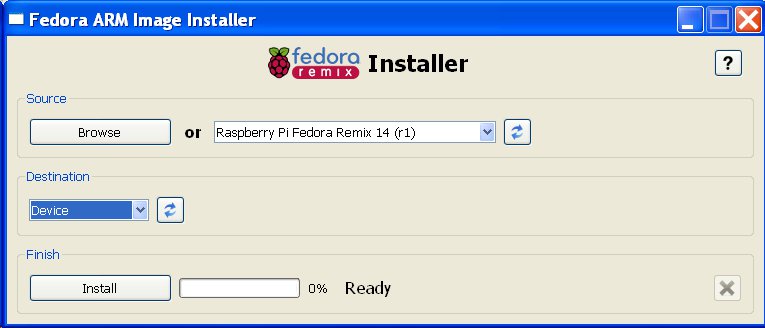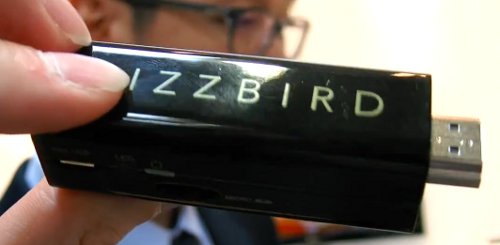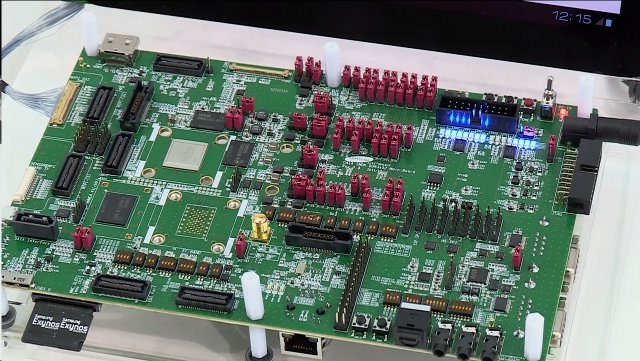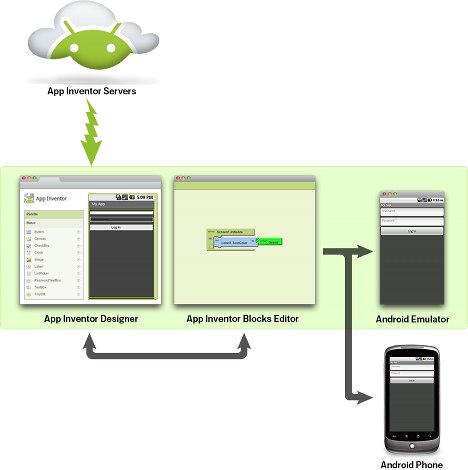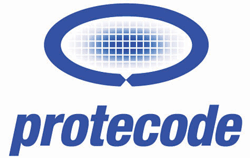Seneca has officially released Raspberry Pi Fedora 14 Remix, the main distributions for the Raspberry Pi low cost ARM11 board based on Broadcom BCM2835. There are two methods to install Fedora 14 for the Raspberry Pi on the SD Card: Using the Installer This method is available for: Fedora 16 – http://files.velocix.com/c1410/fedora/installer/fedora/fedora-arm-installer-1.0.0-1.fc16.noarch.rpm Windows Vista or Windows 7 – http://files.velocix.com/c1410/fedora/installer/windows/fedora-arm-installer-1.0.0.zip Other Linux (Python) – http://files.velocix.com/c1410/fedora/installer/source/faii-1.0.0.tar.gz For details on the installation procedure, go to http://zenit.senecac.on.ca/wiki/index.php/Raspberry_Pi_Fedora_Remix_Installation Using dd This is the method used for the previous Linux images released for the Raspberry Pi. You can download it via Bittorrent. The HTTP download links are not yet available but will be soon on Raspberry Pi Download page. The Raspberry Pi Fedora Remix 14 is based on the following: Fedora package collection version: 14 Kernel version: 3.1.9 Architecture: armv5tel The Raspberry Pi Fedora Remix 17 will be the second version of the Remix released: Release […]
Valueplus Tizzbird Stick N1: Android 4.0 HDMI/USB Media Player Dongle
Valueplus, a Korean company specialized in “media application products”, is currently showcasing the Valueplus Tizzbird N1 at CeBit 2012, in Hanover, Germany on March 6-10 2012. This device is a media player in a small form factor HDMI / USB stick similar to what we have previously seen with the Roku Streaming Stick, Always Innovating HDMI Dongle Media Player and FXI Tech Cotton Candy. The Tizzbird N1 is powered by Telechips 8925 ARM Cortex A5 processor (TCC8925C) clocked at 800 Mhz with 4 GB NAND Flash and runs Android 4.0 (ICS). The device features an HDMI port, a mini USB port for power, a USB port to connect external mass-storage devices such as a USB hard drive, a microSD card slot and an IR sensor. The device also has built-in Wifi 802.11n for network connectivity. The way it works is you plug the stick into the HDMI port of your TV […]
Google Replaces Android Market with Google Play
Google has just announced the launch of Google Play, an update (and replacement) for the Android Market that gives access to apps, books, movies, and music to users on Android devices and to anyone on the Web. Google expects Google Play to drive more traffic and revenue to the entire ecosystem, including app and games developers. Google also explains there are almost no changes for existing users and developers: Google Play is built on the same infrastructure as Android Market, so the transition for users and developers will be seamless. Users can sign into their existing accounts with the same credentials as before and purchase content using the same payment methods. As a developer, there’s no change needed to your published products and you can continue to use the same publishing tools to put your app in front of hundreds of millions of Android users. If your app was in […]
Samsung Exynos 5250 Dual-core Cortex A15 and GAIA SMDK Development Board
Samsung showcased its new Exynos 5250 Dual-core Cortex A15 processor at Mobile World Congress as well as the corresponding Samsung Exynos 5 GAIA SMDK Development board. Announced in November 2011, the new Samsung Exynos 5250 processor features 2 Cortex A15 clocked at 1.7 GHz or 2 GHz, with a Mali-T604 GPU and support for dual-channel 800 MHz LPDDR3 RAM that allows for a data bandwidth of up to 12.8 GB/s. The processor is manufactured using 32-nm HKMG (High-K Metal Gate) technology that reduces leakage by 30% proving lower power consumption. Samsung claims the new Exynos 5 processors are twice as fast and consume twice as less power than its previous Exynos 4 application processor based on Cortex A9. This seems to confirm TI OMAP 5 vs. Nvidia Tegra 3 benchmark results. The Exynos 5250 supports embedded DisplayPort (eDP) interface up to WQXGA resolution (2560×1600), which is handy for Samsung since […]
Embedded Systems Outlook and Trends for 2012
National Instruments has recently published a report entitled “Embedded Systems Outlook 2012 – Key Technologies and Methodologies Impacting the Embedded Systems Market” which lists technology and business trends for the development of embedded systems. Here are the key findings: Technologies & Architectures: Embedded Platforms Technology providers are developing components, modules, or even complete embedded platforms (software + hardware) with higher levels of integration and increased functionality to speed up time to market. System-on-Chip (SoC) and System-on-Module (SoM) benefit from this trend and some also embed a FPGA. Reconfigurable Computing Previously, designers chose between low-cost microcontroller or high performance CPU based on the expected performance needs of the embedded system. As cost decreases and performance increases, low cost devices such as control and monitoring systems now often come with more features thanks to the use of programmable logic. This type of flexibility can be achieved by adding an FPGA to the MCU […]
MIT Announces App Inventor Open Beta Preview
At the end of 2010, Google Introduced App Inventor, a web based tool allowing non-programmers to easily design Android applications, before phasing it out at the end of 2011. Google eventually made App Inventor open source and it is now handled by the Massachusetts Institute of Technology (MIT) which planned to make a beta version of App Inventor available to the general public in Q1 2012. This happened yesterday, as the MIT App Inventor service is now open to everyone and all you will need is a Google ID for log-in such as a gmail account. There is no need to install any software as was the case with the original version of App Inventor and everything is handled in the web browser. Since this is the first release, MIT explains that there may be issues due to the load from a large number of users and there may be […]
Protecode System 4 Helps Managing Software Package Data Exchange (SPDX) Files
Some days ago, I posted a presentation about SPDX (Software Portable Data Exchange), a new standard file format to share open source licenses. This took place at the Linux Embedded Linux Conference, mid- February 2012 and the presenter said SPDX was still in its infancy, nobody formally adopted it and current tools would take input from an excel file and convert it into an XML/RDF SPDX file. However, Protecode, a company specialized in open source license management solutions, has already a management suite called Protecode System 4 that can handle SPDX format among other things. Here’s how the company describes Protecode System 4: Protecode System 4 is a complete license management solution for all stages of the software development process. Protecode System 4 enables users to manage open source and third party license compliance by providing a list of all open source components that exist in a software product along […]
Raspberry Pi Releases Arch Linux SD Card Image
The Raspberry Pi Foundation has just announced the release of Arch Linux for the Raspberry Pi. This image is based on a minimal image of Arch Linux and does not come with a graphical interface. This distribution may not be suitable for beginners and you may be better off using the Debian SD Card image or even the upcoming Fedora 14 Raspberry Pi Remix image. You can always install extra packages with Pacman, the Arch Linux package manager. To update the package list:
|
1 |
pacman -Syu |
To Install LXDE Graphical Interface:
|
1 |
pacman -S lxde xorg-xinit xf86-video-fbdev |
To run LXDE:
|
1 |
xinit /usr/bin/lxsession |
You can download it using BitTorrent: archlinuxarm-01-03-2012.zip.torrent (preferred method) or via one of the HTTP mirrors: archlinuxarm-01-03-2012.zip. (This link will redirect your download to the closest available HTTP server). The default login credentials are: root/root I haven’t tried it, but you should be able to use this release in qemu, by following instructions similar to the one […]


